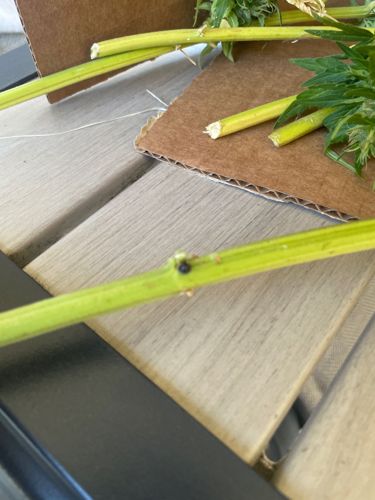Aphid (specifically based on common appearance and context, likely a cannabis aphid or similar plant aphid)
Scientific Name: Varies widely, but commonly within the family Aphididae (e.g., Phorodon cannabis for cannabis aphid)
Order & Family: Hemiptera, Aphididae
Size: Typically 1-3 mm in length, though some can be up to 6 mm. They can be various colors including green, black, brown, red, or yellow, and can be winged or wingless.

Natural Habitat
Found on the stems, leaves, and new growth of host plants, often in dense colonies. They prefer temperate climates and can be found in gardens, agricultural fields, greenhouses, and indoor grow operations.
Diet & Feeding
Aphids are sap-sucking insects. They feed by inserting their stylets (mouthparts) into the phloem vessels of plants to extract sap. They excrete a sugary waste product called honeydew.
Behavior Patterns
Aphids reproduce rapidly, often parthenogenetically (without mating), leading to quick population growth. They can produce winged forms when colonies become too dense or host plant quality declines, allowing them to disperse to new plants. They are often attended by ants, which feed on the honeydew and protect the aphids from predators.
Risks & Benefits
Risks: Aphids are significant agricultural pests. Their feeding can cause stunted growth, leaf curling, yellowing, and wilting of plants. They can also transmit plant viruses and their honeydew can promote the growth of sooty mold, which reduces photosynthesis. Benefits: While generally considered pests, they are a food source for many beneficial insects (e.g., ladybugs, lacewings, hoverfly larvae), which helps to control their populations naturally. Their role in ecosystems primarily revolves around being a primary consumer and a food web component.
Identified on: 9/7/2025